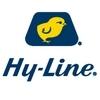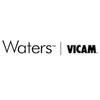Explore all the information on
Minerals in poultry nutrition
Minerals in poultry nutrition are typically classified as macro- or micro-minerals, depending on the levels needed in the diet. The macro-minerals include calcium, phosphorus, chlorine, magnesium, potassium, and sodium. Requirements for the macro-minerals are typically expressed as a percentage of the diet, while the requirements for the micro-minerals are stated as parts per million. Although the quantities required for micro-minerals are lower than for macro-minerals, they play an essential role in the body's metabolism. The micro-minerals include copper, iodine, iron, manganese, selenium, and zinc.
Everybody talks about the dosage of organic selenium in animal feed for all species. What are your suggestions? ...
Comments : 0
Recommendations: 0
Please share the idea for the source of organic and inorganic selenium in poultry diets. What would be the difference between them? ...
Comments : 0
Recommendations: 0
1. INTRODUCTION The metabolism of vitamin D, calcium and phosphorus within the chicken is uniquely integrated. The absorption of intestinal calcium depends on many factors but one of the most important is vitamin D (Ameenuddin, Sunde et al. 1985). There is obscurity regarding the exact mechanisms of calcium absorption across the intestine, however it is known that vitamin D is essential for the synthesis of calcium binding protein (CaBP) in the...
Comments : 2
Recommendations: 0
Danisco Animal Nutrition, a business division of DuPont Industrial BioSciences, hosted a VIP seminar before the main EPC conference kicked off on June 23. Dr. Peter Plumstead began the seminar with a presentation that separated the facts concerning nutrient release from phytase from the fiction. He stressed the importance of establishing robust estimates of calcium and phosphorus contributions when selecting phytase products and the necessity of species-specific...
Comments : 0
Recommendations: 0
Materials and methods Performance study A 42-d performance study was conducted utilizing 2640 Straight Run Broiler chicks in 88 pens containing 30 chick/pen. Each pen contained 1 water fountain and a 50 lb capacity feed tube. Pen density provided 0.67 ft 2 per bird initially. Prior to trial start all pens were carefully inspected to ensure that there were no...
Comments : 1
Recommendations: 0
Natural remedies presents some of the most important products developed for animal healthcare in poultry and cattle....
Comments : 0
Recommendations: 0
Phytate Phytin (deposited complex of inositol hexaphosphate with potassium, magnesium and calcium), more recognized in animal nutrition as phytate, is the major storage form of phosphorus (P) present in seeds. Originally recognised as a source of P during germination, the presence of phytin in the seed during the germination process is now also known to play an important role in preventing oxidative stress and thus...
Comments : 3
Recommendations: 0
...
Comments : 0
Recommendations: 0


The Relevance of Starch-Protein Digestive Dynamics in Crude Protein-Reduced Broiler Diets
Suggested link
I. INTRODUCTION The modern broiler chicken has been genetically selected for rapid growth, increased muscle mass and heavier breast weight (Garner et al., 2002). This increase in production may also be associated with poor leg health and lameness and is often linked to skeletal abnormalities due to reduced bone mineralisation. Poor leg health and lameness affects millions of broiler chickens worldwide, with lame birds having significantly reduced...
Comments : 6
Recommendations: 0
I. INTRODUCTION Historically, there has been a move from the use of a total Ca (tCa) to total P (tP) ratio system (NRC, 1950) to a tCa to inorganic P (iP) ratio (NRC, 1954), to the use of tCa to available P (aP) that appeared in the 1984 NRC. In 1950, the requirements were 1.0% tCa and 0.6% tP (1.66 tCa:tP) (NRC, 1950) and, in the 1954 NRC, the qualification was made giving importance to the availability of P by specifying that, of the 0.6% tP...
Comments : 3
Recommendations: 1
A battery study was conducted to evaluate effect of different sources of selenium (Se) on growth performance, glutathione peroxidase (GPx) activity and tissue Se deposition of young broilers. A semi-purified diet containing corn starch, dextrose, and torula yeast was formulated to meet requirement of broilers for all nutrients except Se. The Se level was formulated to be 0.11 ppm but analyzed to be 0.23 ppm. The study consisted of 9 treatments - negative...
Comments : 0
Recommendations: 0
A 42 d trial was conducted to determine the response of MINTREX ® (metal methionine hydroxy analogue chelate) vs. industry levels of ITMs (inorganic trace minerals) on performance, immune response, and litter trace minerals concentration by feeding broiler chicks diets containing varied levels of supplemental Zn, Cu and Mn as chelates in comparison to industry levels of inclusion of respective inorganic trace minerals...
Comments : 0
Recommendations: 0
A 15 week (wk 21-36) study was conducted in a commercial broiler breeder facility to determine the impact of feeding reduced levels of MINTREX ® (metal methionine hydroxy analogue chelate) vs. industry levels of ITMs (inorganic trace minerals) in breeder hens on egg quality, hatching rate and progeny quality. A total of 15200 male line of Hubbard breeder hens were distributed into 4 houses (with floors having 1/3 slats and...
Comments : 0
Recommendations: 0
Trace minerals are important for broiler growth and are used in various physiological, digestive and biosynthetic process of the body. Trace minerals act as cofactors in many enzymes and are associated with proteins involved in intermediary metabolism, hormone secretion path ways and the immune system (Dieck et al., 2003). In broilers, organic trace minerals are better absorbed and utilized and have a greater bioavailability than inorganic trace minerals (Bao et al., 2007)....
Comments : 0
Recommendations: 0
I. INTRODUCTION
Limestone is composed primarily of CaCO 3 and is commonly used as a source of calcium (Ca) in poultry diets. Pure CaCO 3 has a molecular weight of approximately 100g/mole and so is around 400 g/kg Ca. However, CaCO 3 sources used in animal feeding are typically only 370-380 g/kg Ca, sometimes less, due to the presence of other minerals such as Mg or Fe. Furthermore, the bioavailability of...
Comments : 0
Recommendations: 0
I. INTRODUCTION Calcium (Ca) and phosphorus (P) requirements of poultry have been investigated extensively over the past 50 years. However, the interactions of these two macrominerals are highly complex and are not easily interpreted. The majority of published animal nutritional research is based either on altering a single food property at a time or where multiple factors are changed. While these approaches are valuable in some circumstances,...
Comments : 0
Recommendations: 0
INTRODUCTION Trace minerals are required to ensure the health and productivity of livestock species. However, requirements are poorly defined in most species and our understanding of the relationship between mineral source and its ability to meet specific requirements lacks precision. As a consequence inorganic trace minerals (ITM) are included in poultry diets at levels several times NRC [3] recommendations. Low absorption coupled with high...
Comments : 0
Recommendations: 0










.jpg&w=3840&q=75)


.jpg&w=3840&q=75)










